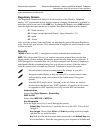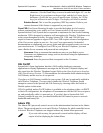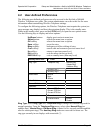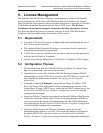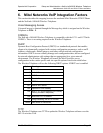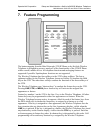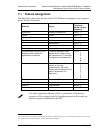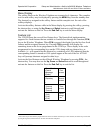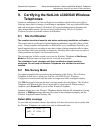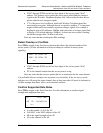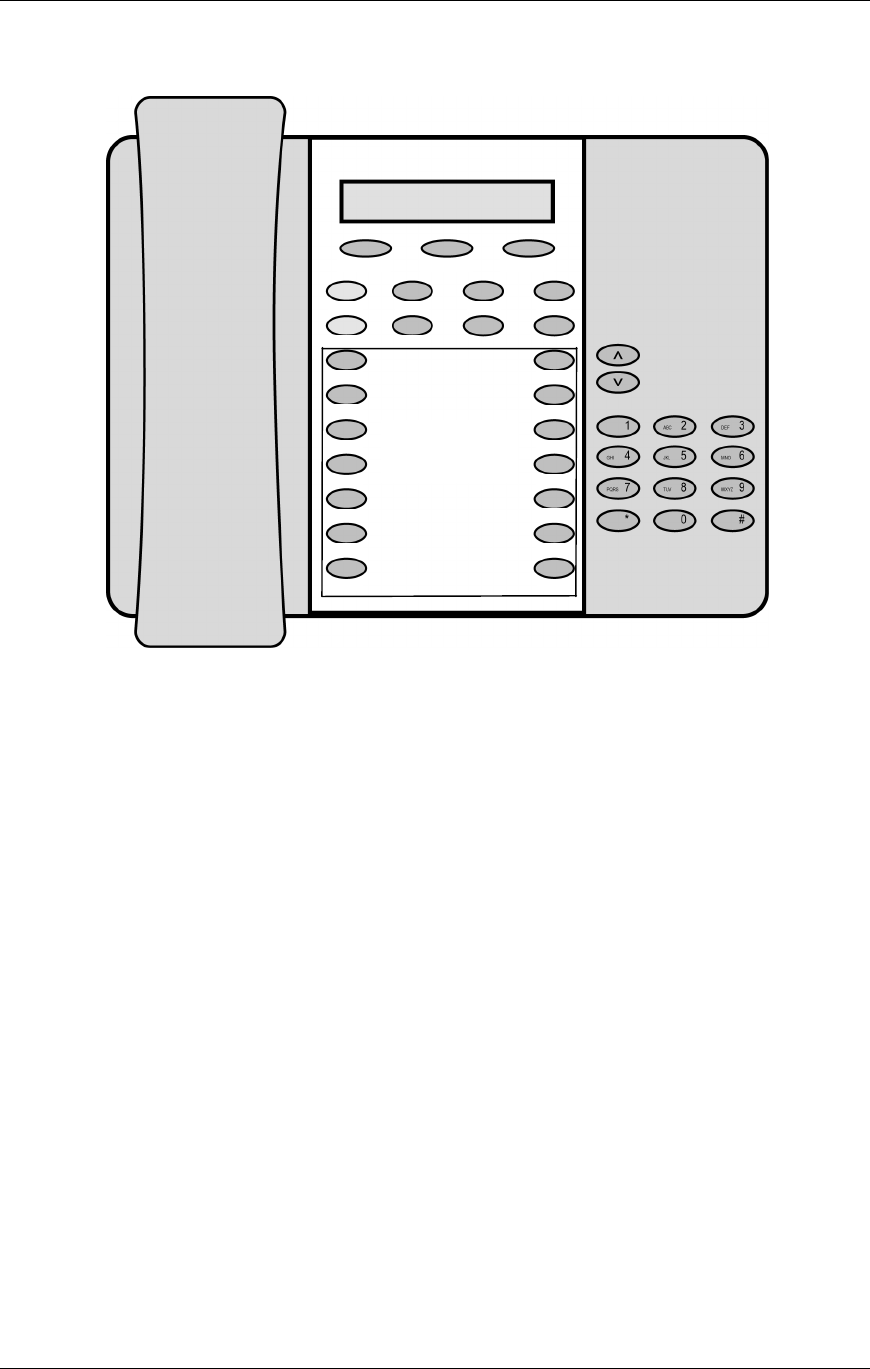
SpectraLink Corporation Setup and Administration—NetLink e340/i640 Wireless Telephone
Mitel Networks 3300 ICP and 5220 IP Phone emulation
PN: 72-1084-02-B.doc Page 25
7. Feature Programming
The button mapping from the Mitel Networks 5220 IP Phone to the NetLink Wireless
Telephone is designed to preserve nearly all of the functionality of the 5220 IP Phone
within a small, mobile device. All telephone functions and messaging features are
supported if possible. Speakerphone functions are not supported.
The Wireless Telephone has four softkeys to the 5220’s three softkeys. The last or
rightmost softkey on the Wireless Telephone, known as Softkey D, emulates the Hold
key on the 5220. The other three softkeys emulate the functions of the three softkeys of
the 5220.
The Wireless Telephone uses “shortcut keys” to emulate the feature keys on the 5220.
Pressing
LINE, FCN, or MENU plus a shortcut key will activate the assigned line
appearance or feature.
Feature key number 1 on the 5220 is the Line 1 key in the Wireless Telephone. All other
feature keys may be programmed to either line appearances or features. When the
Wireless Telephone becomes active, it requests a label for each of the feature keys from
the PBX which tells it whether the feature key is assigned to a feature or to a line
appearance. If the key is assigned to a line appearance, the Wireless Telephone lists the
line extension plus any shortcut key on the Line Appearance display, visible when the
LINE key is pressed. If the key is assigned to a feature, the Wireless Telephone lists it and
any shortcut key on the Feature display, visible when the
FCN key is pressed. Each line
or feature appears in feature key order. Its shortcut key is determined by this order. OAI
programming will override any shortcut keys assigned by the Wireless Telephone.
Programmable
Line or Feature
keys
Softke
y
A
So
f
tke
y
B Softke
y
C
Fcn6 Fcn1 Fcn3
Fcn2Softke
y
D
Line12
6
8
10
12
14
3
5
7
9
11
13
4
Fcn4



